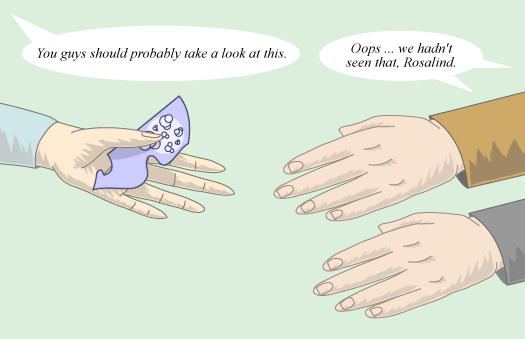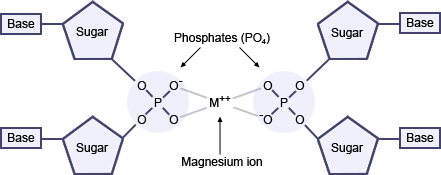In order to try model building, Crick and Watson still needed data on DNA as a starting point. Molecular model-building works because it lets researchers explore different hypotheses about molecular structures and see which hypotheses fit well both with our knowledge about how atoms bond together and with evidence regarding the structure of a particular molecule like DNA. But evidence of DNA’s structure came mainly from X-ray diffraction, Wilkins and Franklin’s domain.
Fortunately for Crick and Watson, communicating evidence and results is a standard part of the process of science. They kept an eye out for any talks or papers related to DNA’s structure, and as soon as they heard that Franklin was going to share her findings in a talk at the University of London, Watson made plans to go. At the presentation, Franklin showed X-ray diffraction patterns produced by DNA A and B, and discussed how the two forms seemed to be produced by surrounding the DNA molecules with different amounts of water. She also described the spacing between the atoms in DNA, based on the patterns in her diffraction images. Watson listened with interest. Yet the next day, his memory failed him when he met up with Crick to discuss the evidence Franklin had shared. In particular, he couldn’t seem to remember how much water Franklin had said surrounded the molecule. Nonetheless, Crick had experience in X-ray diffraction and thought he could put the pieces together. They decided that they had enough evidence to build a model of DNA’s structure.

In their model, three long twists of the sugar-phosphate chain were held together by magnesium ions, and the bases flopped outward from this central backbone. Watson and Crick excitedly invited Wilkins, Franklin, and Gosling to come see the model. When Franklin arrived, she quickly saw that Watson had remembered several things incorrectly — in particular, he had forgotten the amount of water that surrounded each strand. DNA crystals contained at least ten times as much water as their model allowed for, and there was no evidence that DNA contained any magnesium at all. If it did, all that water would cling to the magnesium ions, tearing the molecule apart. It was clear that the hypothesis Watson and Crick had formulated using their metal-and-wire models didn’t fit the available evidence on DNA. It would have to be rejected.

One of the key characteristics of science is that it relies on evidence. When ideas — like Watson and Crick’s first stab at a structure for DNA — don’t fit the available evidence, they are ultimately rejected or modified. To learn more, visit Science relies on evidence.
